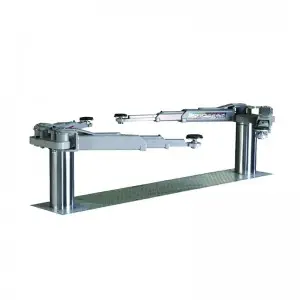Alternating Current (AC) is a fundamental concept in electrical engineering and plays a critical role in powering our modern world. The term “AC series” generally refers to a configuration of electrical components connected in series within an AC circuit. In this article, we will explore what AC series circuits are, their characteristics, how they differ from AC parallel circuits, and their numerous applications in various industries.

Understanding AC Series: A Comprehensive Guide to Alternating Current Circuits and Their Applications in Modern Technology
What is an AC Series Circuit?
An AC series circuit is a type of electrical circuit where components such as resistors, inductors, and capacitors are connected end-to-end. In this configuration, the same current flows through all the components sequentially. One of the defining characteristics of an AC series circuit is that the total voltage across the circuit is equal to the sum of the individual voltages across each component. This can be mathematically expressed using Kirchhoff’s Voltage Law.
Characteristics of AC Series Circuits
1. **Current**: In a series circuit, the current flowing through each component is the same. This uniformity means that if any part of the series circuit fails (for example, if a resistor burns out), the entire circuit will stop functioning due to the interruption in the current flow.

Understanding AC Series: A Comprehensive Guide to Alternating Current Circuits and Their Applications in Modern Technology
2. **Voltage Drop**: The voltage drop across each component can vary depending on its impedance. The impedance is a measure of how much the component resists the flow of current and is influenced by the component’s resistance (R), inductive reactance (XL), and capacitive reactance (XC).
3. **Total Impedance**: The total impedance (Z) of an AC series circuit can be calculated using the formula:
\[
Z = \sqrt{R^2 + (X_L – X_C)^2}
\]
where XL is the inductive reactance and XC is the capacitive reactance. The impedance affects how much current flows through the circuit when subjected to a given voltage.
4. **Phase Angle**: In AC circuits, phase angle represents the difference in phase between the current and voltage waveforms. This angle is influenced by the components present in the circuit – resistive components contribute 0 degrees, inductive components lead to a positive phase angle, and capacitive components result in a negative phase angle.
5. **Resonance**: In circuits containing both inductors and capacitors, resonance can occur when the reactive components’ reactance cancels each other out, resulting in a purely resistive load at a specific frequency.
Applications of AC Series Circuits
AC series circuits are employed in a variety of applications in several sectors, including:
1. **Sound Equipment**: Many audio amplifiers use series circuits to ensure that the signal flows through multiple stages of processing. This configuration helps in managing the overall gain and allows for complex equalization.
2. **Lighting Systems**: Some types of lighting systems, especially those using incandescent bulbs, may be wired in series. However, this setup is less common due to the aforementioned issue whereby one bulb failing will cause the entire circuit to stop working.
3. **AC Motors**: Many AC motor designs utilize series circuits for components within their windings, ensuring a consistent flow of current and torque as the motor operates.
4. **Voltage Regulation**: AC series circuits are also instrumental in creating voltage regulators, which maintain stable voltage levels in various electronic systems, especially in power supply systems.
5. **Measurement Instruments**: Devices such as ammeters and voltmeters often exhibit a series configuration to provide accurate readings. When measuring current, the ammeter must be placed in series with the circuit.
Conclusion

Understanding AC Series: A Comprehensive Guide to Alternating Current Circuits and Their Applications in Modern Technology
Understanding AC series circuits is crucial for anyone studying electrical engineering or working in industries that rely on electrical systems. These circuits have unique characteristics that differentiate them from parallel circuits, making them suited for specific applications in audio, lighting, motor function, and more. As technology continues to advance, AC series circuits will likely evolve, but their foundational principles will always remain integral to our understanding of electricity and electronics. The ability to analyze impedance, voltage drops, and phase differences is essential knowledge for designing efficient and effective electrical systems in the modern age.New Engery Vehicle Battery Lift



